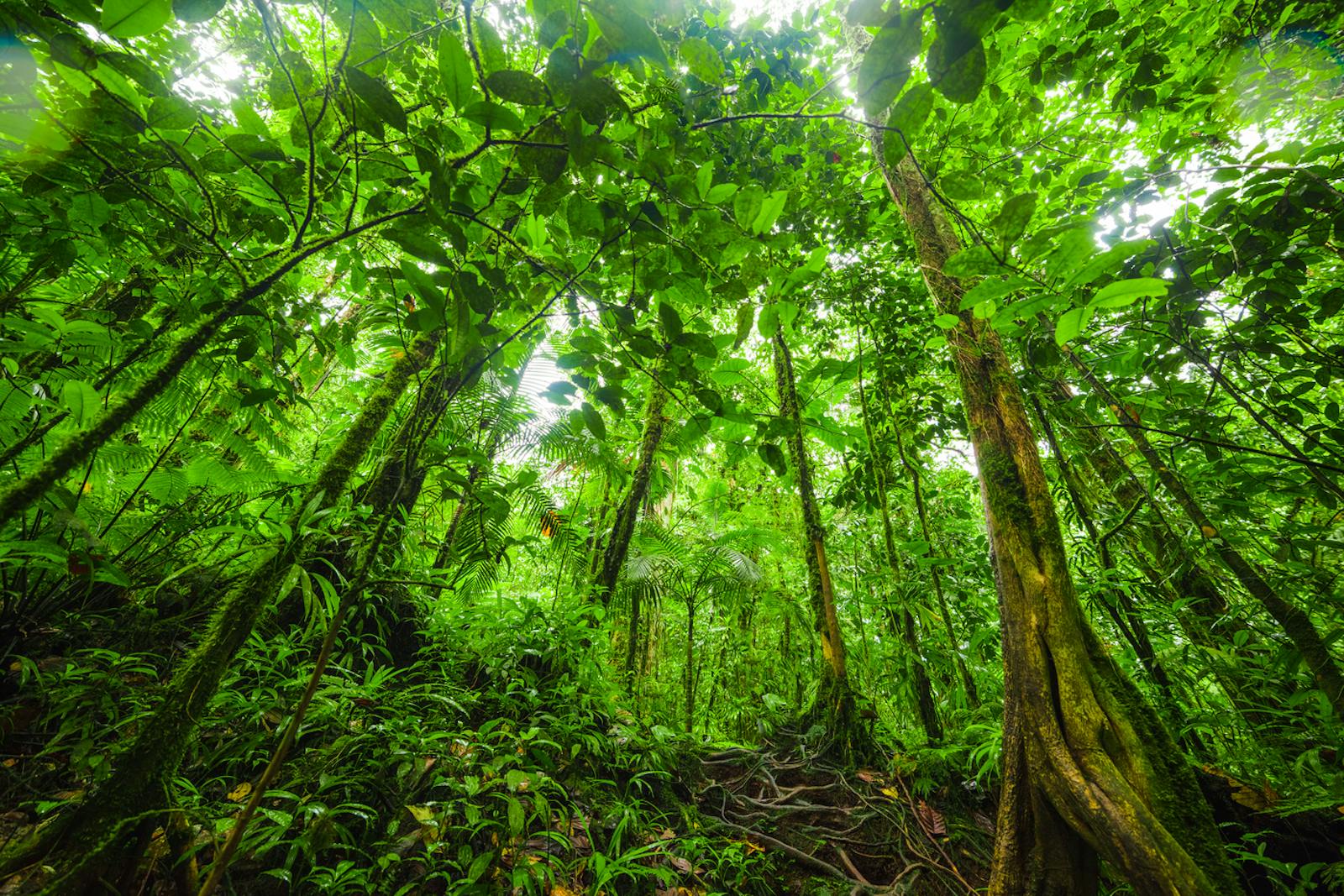Lesser Antillean Dry Forests
The ecoregion’s land area is provided in units of 1,000 hectares. The protection goal is the Global Safety Net (GSN1) area for the given ecoregion. The protection level indicates the percentage of the GSN goal that is currently protected on a scale of 0-10.
Bioregion: Caribbean Islands (NT26)
Realm: Central America
Ecoregion Size (1000 ha):
64
Ecoregion ID:
537
Conservation Target:
86%
Protection Level:
2
States: Antigua, Montserrat, Barbuda, St. Eustatius, Anguilla
The critical endangered Lesser Antillean iguana, although having been extirpated from much of its previous range, has a remnant population on the island of Anguilla within the Lesser Antillean Dry Forests ecoregion. This large, cold-blooded herbivore consumes large amount of leaves, flowers, fruits, and growing shoots among the dry leaf litter to meet its metabolic needs and has evolved a specialized nasal salt gland to excrete nitrogenous wastes to maintain homeostasis. It will quickly climb up a tree to bask in the sun, or when startled. In addition to habitat loss, the Lesser Antillean iguana is threatened by introduced predators such as feral cats and dogs, and by competition with their introduced close relative, the green iguana; less than 20,000 individual remains.

The flagship species of the Lesser Antillean Dry Forests ecoregion is the lesser Antillean iguana. Image credit: Creative Commons
This ecoregion covers small portions of the Caribbean’s Leeward Islands. It is characterized by moderate relief and rainfall, and covers all of St. Eustatius, the central portion of Barbuda, interior portions of Montserrat, and small coastal areas on Anguilla and Antigua. Corresponding with lower elevations and less rainfall, the original forest formations of this ecoregion include littoral woodland, thorn woodland, deciduous woodland, and semi-evergreen woodland. Commonly found plant species include Tabeduia pallida, Begonia retusa, Aristida suringari, and red rodwood. Some damp valleys still house remnants of the original woodland mixed with fruit trees and large numbers of Acacia and Orchidaceae species can be found in specific locations.
Nearly three centuries of deforestation and land clearing for intensive agricultural use have resulted in the removal or degradation of much of the original vegetation and contributed to habitat destruction and subsequent loss of species richness. Most of the remaining mammals within the Leeward islands are introduced species. This includes agouti and fallow deer to provide game, the inadvertent introduction of black and Norway rats, and the Indian mongoose. There are no endemic rats left in the ecoregion.
Reptiles associated with the ecoregion include Anolis lizards, several species of gecko, the red-footed tortoise, and the Lesser Antillean iguana. The Leeward Islands are similar to other Caribbean islands in having a relatively high degree of island-endemism. The amount of diversity and number of island endemics in the Lesser Antilles is related to island size, diversity of habitat, and distance from the mainland or another island.
Much of this ecoregion has been drastically reduced in most parts of the Leeward Islands. On the other hand, Barbuda, which consists primarily of this dry forest habitat, has much of its original dry forest community intact, representing a valuable scientific resource. Conservation measures in the dry forests vary significantly from one island to another.
In Montserrat there is no backed legislation for establishing and managing natural areas nor is there any governmental organization with responsibilities for wildlife conservation. In Antigua and Barbuda, the National Parks Act gives general jurisdiction to the relevant Minister to declare any area of land or water to be a national park. This institutional framework for the management of protected areas needs review, primarily because laws have been passed without sufficient consideration of staffing and budgetary requirements.
The drier forests, being of lower relief and closer to population-related development, are more susceptible to agricultural encroachment, hunting, and also suffer from limited enforcement of wildlife and environmental legislation. Introduction of predators, in particular domestic cats and mongooses, has had devastating impact to the populations of native animals, including several small mammals, birds, and reptiles that have been extirpated.
The priority conservation actions for the next decade are to: 1) coordinate environmental outreach and education to locals about the benefits of biodiversity; 2) create more protected areas in the relatively intact dry forests of Barbuda; and 3) promote a government entity or NGO for wildlife conservation in Montserrat.
Citations
1. Armstrong, S. 2018. Islands of the Lesser Antilles in the Caribbean https://www.worldwildlife.org/ecoregions/nt0220 Accessed November 6, 2018.
2. Donovan, S. K., and T. A. Jackson. 1994. Caribbean geology: an introduction: Kingston. Proceedings from a workshop of the IUCN/SSC Rodent Specialist Group, #4. p. 11-19.
3. Butler, P. 1991. Making a move on Montserrat. Philadelphia: Rare Centre.
4. van den Burg, M., Breuil, M. & Knapp, C. 2018. Iguana delicatissima. The IUCN Red List of Threatened Species 2018:e.T10800A122936983. http://dx.doi.org/10.2305/IUCN.UK.20181.RLTS.T10800A122936983.en. Downloaded on 07 November 2018.



